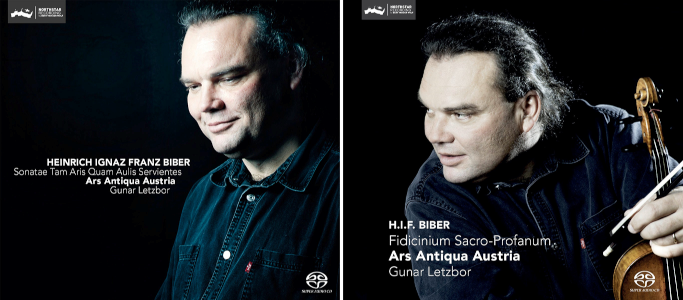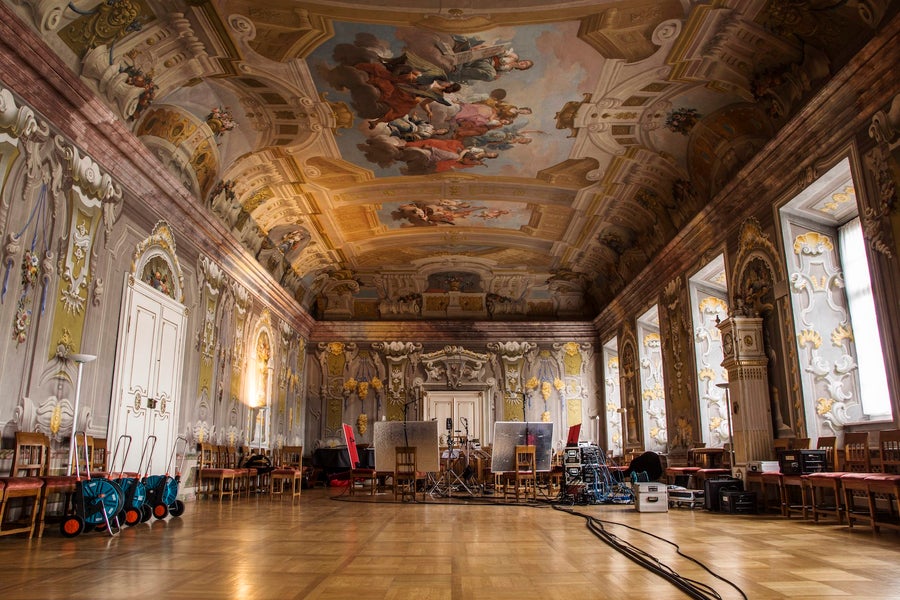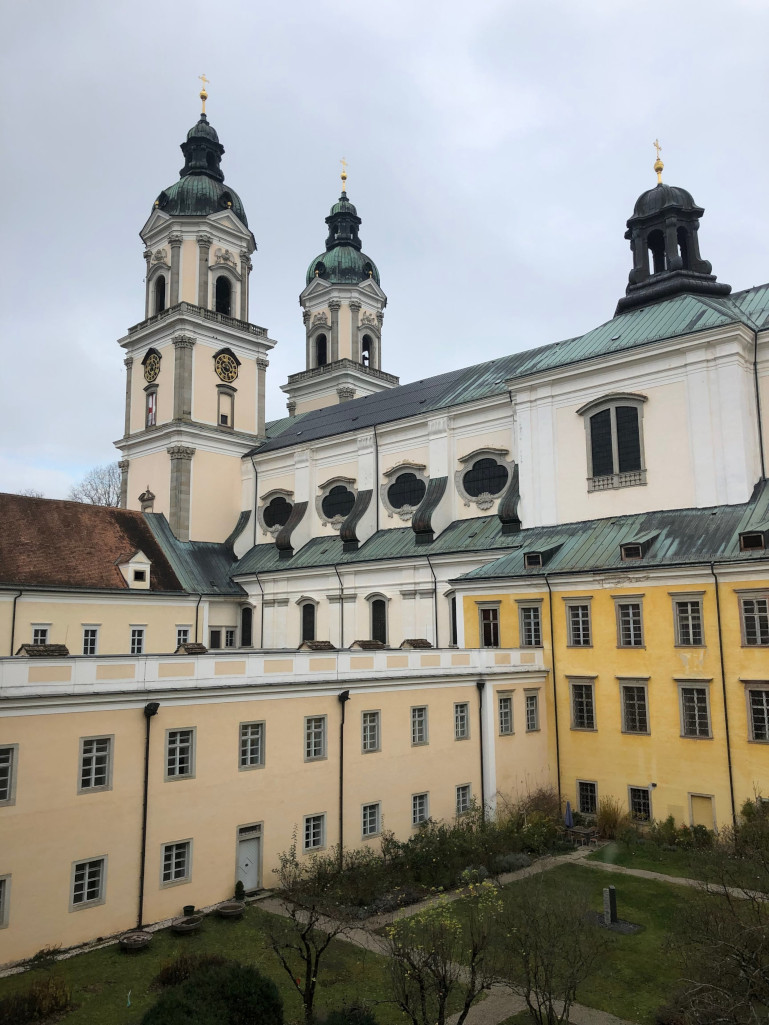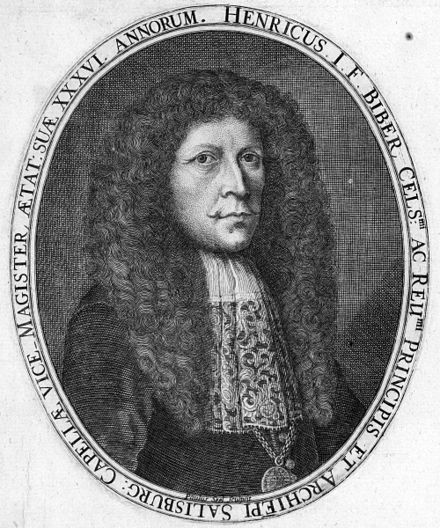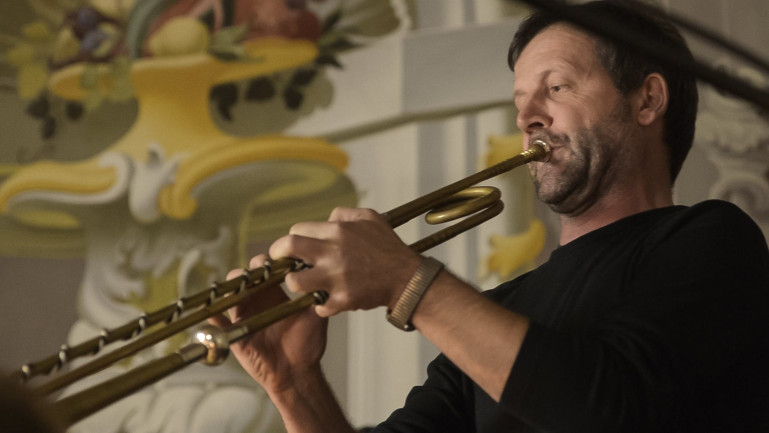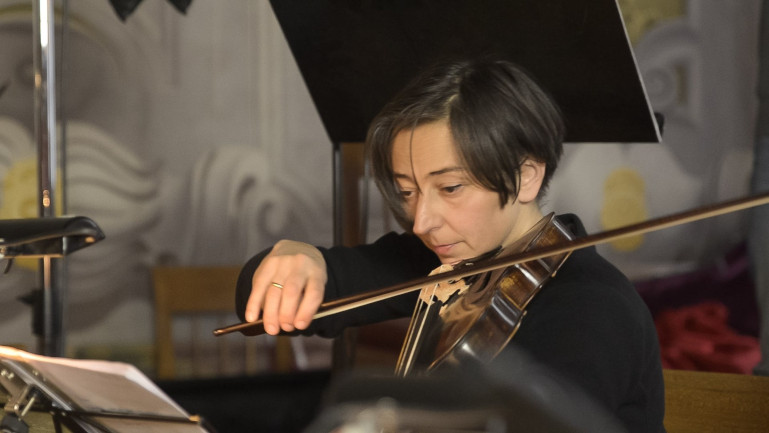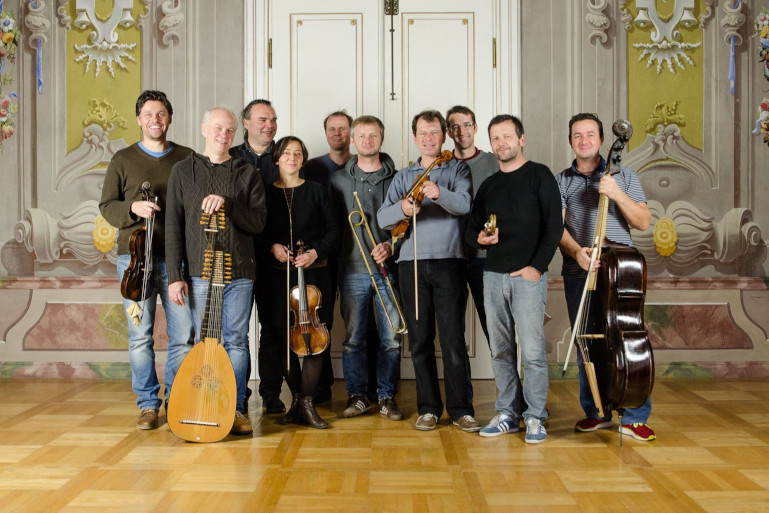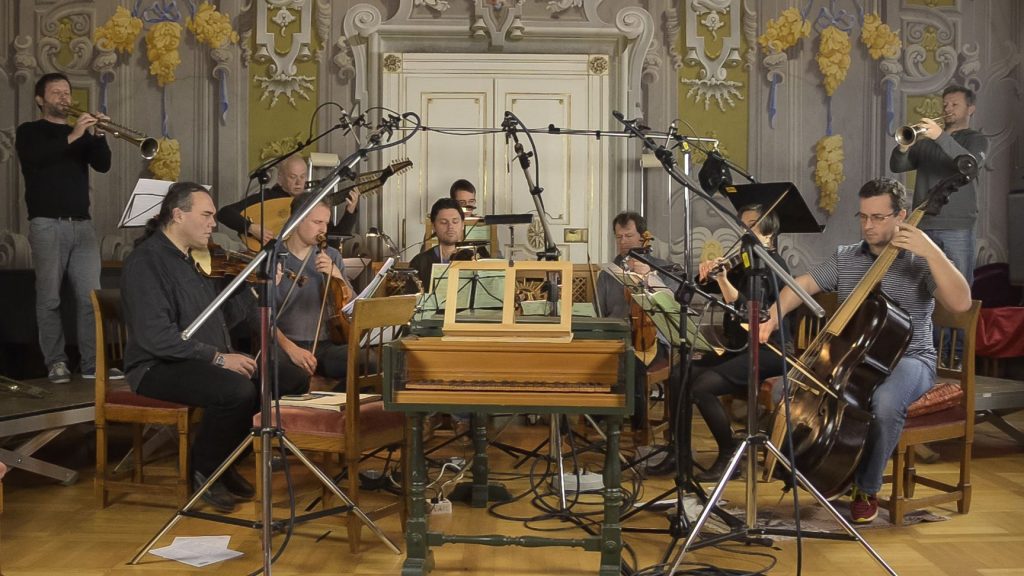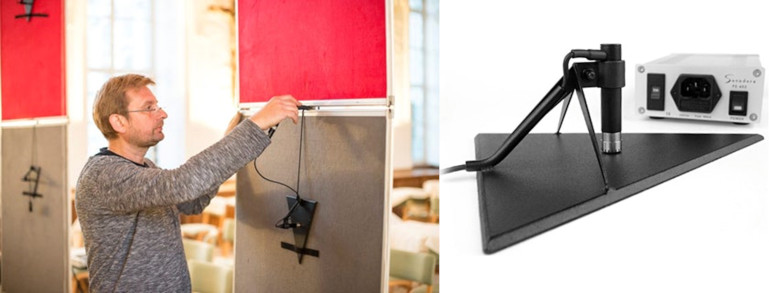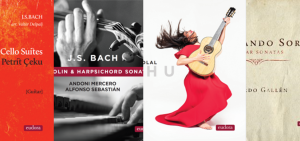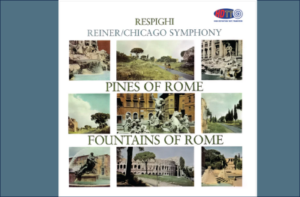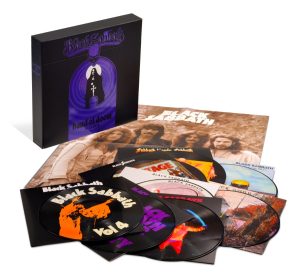As I continue exploring the recordings by Ars Antiqua Austria, I am delighted by the richness of instrumentation brought to the works they've chosen to play. These performances are a sumptuous feast of timbre, harmony and dynamics, coupled with superb musicianship. All complemented by glorious sonics. Today, our discussion turns to their recordings of works by H.I.F. Biber.
Heinrich Ignaz Franz Biber: Sonatae Tam Aris Quam Aulis Servientes - Ars Antiqua Austria. Challenge Classics | Northstar Recording (2014 (DXD) HERE
Heinrich Ignaz Franz Biber: Fidicinium Sacro-Profanum - Ars Antiqua Austria. Challenge Classics | Northstar Recording (2013 (DXD) HERE
Both albums are of music by Heinrich Ignaz Franz Biber (1644-1704) played in the beautifully reverberant acoustics of the Altomonte-Saal, Abbey of St. Florian. As recording engineer Bert van der Wolf says, "St. Florian's Baroque rooms are simply stunning, reverb engines avant la lettre and suit the music like a perfect glove!" Having now heard three of his recordings of the Ars Antiqua Austria performing in this space, I wholeheartedly agree—simply a stunning acoustic space perfectly suited for these performances on period instruments.
Biber was a Bohemian-Austrian composer and violinist. Born in the small Bohemian town of Wartenberg, Biber worked in Graz and Kremsier before settling in Salzburg where he remained for the rest of his life. He was among the major composers for the violin in the history of the instrument, and during Biber's lifetime, his music was known and imitated throughout Europe. (Wikipedia)
I have long enjoyed the music of Biber, but I don't recall ever hearing it so elegantly and expansively performed as by Ars Antiqua Austria. They seem to simply glory in these compositions, delivering rhythmically alive, dynamic performances with a complex interplay of instruments and sounds. I am thrilled to hear them, and I suspect Biber would have been as well.
I place the Sonatae Tam Aris Quam Aulis Dervientes (1676) first in my listing, because if you are going to sample only one recording of Biber's music as played by Ars Antiqua Austria, I highly recommend you start with this album.
Gunar Letzbor, director and violinist, writes, "The title Sonatae tam aris quam aulis servientes suggests that these works can be used for both sacred and secular purposes… The collection opens with a richly scored sonata: two trumpets, two violins, a choir of four violas and basso continuo reflect the prosperity and grandeur of the Salzburg court. In this sonata, eight voices compete in an orderly fashion within the polyphonic texture, rejoicing impressively at several points of culmination. Contrasts dominate the process. The trumpets present characteristic signals whilst the violins contribute softer sounds, also taking delight in playful and virtuoso figures. The violas keep changing sides, moving within especially dense polyphonic textures: in doing so, they lend the sonata an air of elite art music. In the dance-like closing section, Biber indulges in Venetian polychorality, letting melodies and motifs wander through all parts and only unifying them at the end into homophonic euphony."
And, indeed, this opening sonata is an eye-popping introduction to Biber. It is timbrally complex, a sumptuous romp through instrumental colors and contrasts. At first hearing, I thought AAA had also introduced Baroque drums into the aural mix and then realized it was the intriguing application of organ chords as part of the basso continuo and played with percussive effect.
The set of sonatas continues with great variety, each with a distinctively different character and changing leads by the instruments. This set of sonatas held my interest throughout as Biber continued to surprise, confounding my expectations for how he would proceed with each piece. Entirely enjoyable!
Heinrich Ignaz Franz Biber: Fidicinium Sacro-Profanum - Ars Antiqua Austria. Challenge Classics | Northstar Recording (2013 (DXD) HERE
The second recording I commend to you is AAA's performance of Biber's Fidicinium Sacro-Profanum (1682). This is a very different set of music—not orchestrated for as broad a variety of instruments (e.g., no trumpets or organ), but totally absorbing in so many ways.
In the first piece, Biber composes a richly colored, five-part setting in which he artfully weaves a polyphonic texture that allows one or more parts to alternate and come to the fore. Coming 6 years after the Sonatae tam aris quam aulis servientes, the first sonata in this set presents a complexity that demonstrates true mastery of composition for this five-part string ensemble: 2 violins, 2 violas, violone and basso continuo. Letzbor says of them, "In their complex structure these masterpieces are for me comparable solely to the late Beethoven quartets."
Each of the sonatas in the Fidicinium Sacro-Profanum has a unique character. In the later part of this collection, Biber pares the instrumental parts to just four, but more than compensates by the introduction of virtuoso passages for each. " The artful interweaving of parts becomes more transparent in the polyphonic sections and lets the individual parts occasionally take centre stage as solos."
And the whole is tremendously engaging, made doubly so by Ars Antiqua Austria's total commitment and robust playing. These are not delicately "nice" performances—they are performances that drive, dance, thunder, and weave with the utmost virtuosity. What a joy to hear!
Once again, Bert van der Wolf brings us the gift of a superbly natural, highly resolving, recording. Listening to the two-channel stereo release in DXD, the balance he achieves between the direct sound of the instruments and the live acoustic from the room is excellent. The recording is spacious, without being reverberant. The instruments are captured with very natural detail and, most importantly, transparency. Nothing draws undue attention, but everything is laid out cleanly so that one can easily following the individual instruments as the music moves from one to another.
This is masterful microphone placement with the objective of capturing as close to the real-life acoustical event as possible. While some of you may recall reading about my preference for Pure DSD256 recorded sound, please understand that capturing the live acoustical event in as natural-sounding a manner as possible is my greatest listening bias. Bert van der Wolf, along with just a handful of other recording engineers working today, achieves this for me. Thus, I highly value each of his recordings.
Many of you will then ask, "Well, in that case, why are you not listening to multi-channel recordings?" And rightfully so. These same recordings are available in multi-channel. Alas, I am not set up for multi-channel playback given my roots in 2-channel vinyl record playback and I'm not likely to be. But, I am very interested in the evolving art of multi-channel recording used to re-create as closely as possible the original live performance event. So, while I can't actively listen to it, I do plan to share some information as a launching point for others to further explore in building their own systems.
And to this point, notice that in some of the photos, you can see panels sitting at instrument level in front of some of the microphone stands surrounding the performers. These panels are a key element in Bert's proprietary multi-channel recording process using boundary layer microphones. More to come about that in a future article.
Also see in this series of articles about Ars Antiqua Austria:
The Artistry of Ars Antiqua Austria, Part 1
The Artistry of Ars Antiqua Austria, Part 3
All photos courtesy of Bert van der Wolf and Northstar Recording




